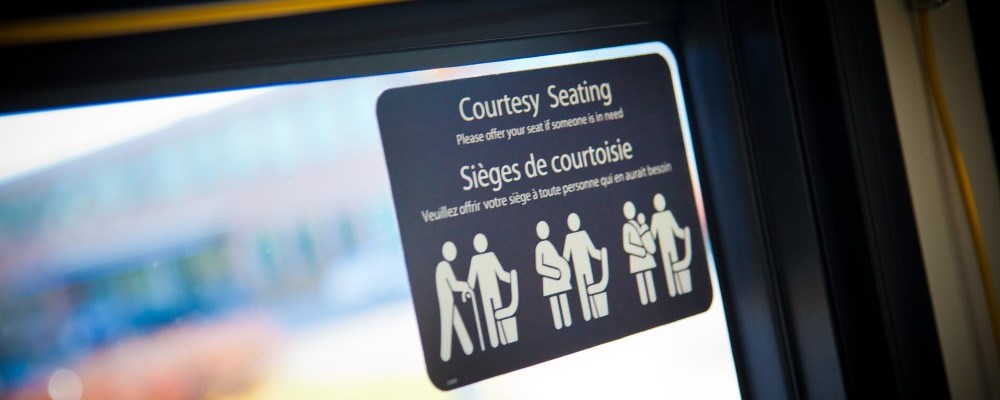Paying your fare
To begin your trip with DRT, you'll need to pay your fare. You'll need either a PRESTO card with available funds or a pass, a paper ticket or pass (including U-Pass), cash, or a transfer. Clearly show your fare to the operator when boarding. You can help keep the bus on schedule by having your fare ready before the bus arrives.
|
PRESTO |
|
This option is the best value for customers. If you have a PRESTO card with available funds or a pass, tap the card on the PRESTO card reader when you board the bus. If you don't have sufficient funds on the card, or if your monthly pass has not been updated to the card, you will need to pay for your trip using cash or tickets. Transfers are not issued with PRESTO as they are stored on the card. |
| PRESTO Open Payment (Debit/Credit) |
|
Presto Open Payment (Presto Contactless) allows customers to pay an Adult cash fare using a debit or credit card. Debit, Visa, Mastercard and Amex card payments are accepted on all Presto fare collection devices, including mobile devices used in On Demand vehicles. Tap your debit or credit card on any Presto device to pay your fare, tapping the same card when transferring between DRT bus routes or to Go Transit services will automatically apply the appropriate transfer and co-fare benefits. |
|
Ticket |
|
Insert your ticket into the top of the fare box as you board and request a transfer at the time your fare is paid. To ensure the safety of operators and customers, DRT encourages contactless payment, where possible. |
|
Cash |
|
Exact fare is required as operators can't make change. Insert the exact cash into the fare box as you board. To ensure the safety of operators and customers, and encourage contact-free payment as much as possible, DRT has suspended paper transfers and all paper passes except for the Access Pass. Customers paying by cash or ticket will need to pay each time they board. |
|
Transfer |
|
You may receive two hours of unlimited travel by requesting a transfer from the transit operator – after paying your fare by cash or ticket. Once you have paid your fare by cash or ticket, you can then request a transfer from the operator. Customers using On Demand and transferring to a scheduled service may show the On Demand transfer to the transit operator, and then proceed to insert it into the farebox. The operator will then issue a printed transfer. When using a PRESTO card, E-Ticket or credit card, transfers are automatically calculated, allowing you to travel for two hours. To ensure the safety of operators and customers, DRT encourages contactless payment, where possible. |
|
Canadian National Institute for the Blind (CNIB) Card |
|
With proper identification, members of the CNIB can travel free of charge on DRT. |
Scheduled service
Our vehicles on scheduled routes (PULSE, Frequent, and local) meet the Accessibility for Ontarians with Disabilities Act (AODA) requirements, including low-floors (no stairs), a kneeling feature to meet the height of the curb, a ramp that can be lowered for easy mobility aid access, and two mobility aid spaces with securement devices. Buses are also equipped with automated audible and visual stop announcements.
Please note for GO train connections, DRT buses wait up to five minutes after the scheduled departure times for late trains, and may be able to wait later late at night.
Courtesy and Priority Seating
Every bus on a scheduled route includes two clearly-marked priority and courtesy seating areas. The seats or space in the priority seating areas are required to be made available to customers using a mobility aid, walker, cane or who would otherwise benefit from a seat.
There are other passengers who may benefit from having a seat in the courtesy seating area. In these instances, customers are asked to do the right thing and give up their seat to a passenger whose need is greater.
DRT operators are not expected to intervene in a priority or courtesy seating dispute. Remember, passengers with invisible disabilities have the same right to access priority seating as passengers with visible disabilities. When a bus is full, or the priority seating areas are occupied, customers using a mobility aid may need to wait for the next bus.
On Demand service
Part of DRT's fleet includes small buses. On-board securement uses a floor track system, and ambulatory seating provides three-point securement.
Contracted vehicles (sedans and accessible vans) are used to enhance DRT's fleet, which helps to reduce delays during peak service hours of service.
Transit stops
All stops are marked with a bus stop sign. Some stops include shelters, benches and/or a garbage can. The bus stop sign indicates where you should wait for the bus. All bus stops are labelled with a stop number. This helps to easily identify the location of the stop in case you need help from Customer Service, or if you are looking up real-time information.
Getting on and off the bus
|
Getting on and off a bus |
|
|
Boarding a bus with a mobility aid |
|
|
Signalling for a stop |
|
DRT scheduled service buses have yellow stop pull cords above the windows, as well as red stop buttons throughout the bus. Pull the stop cord or push the stop button when you hear or see the bus announcement for your stop. |
|
Getting on and off On Demand / Specialized buses |
|
For DRT, safety is always the top priority. Operators will assist and guide passengers on and off the bus. |
|
Travelling with a stroller |
|
|
Travelling with carry-on items |
|

